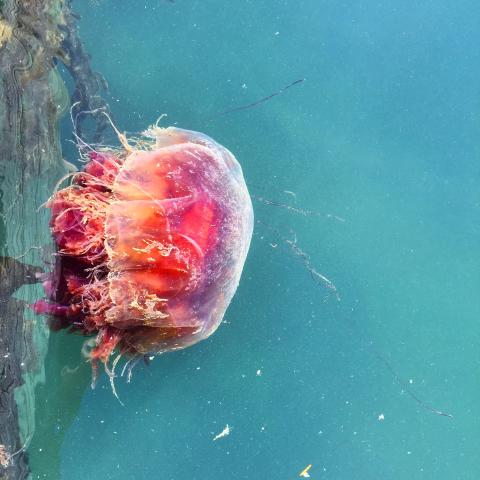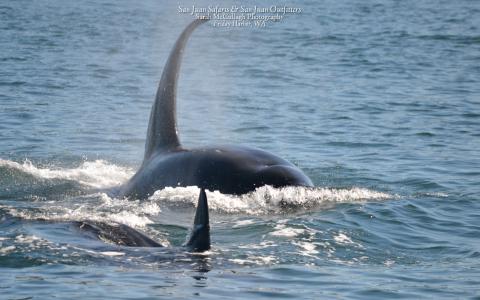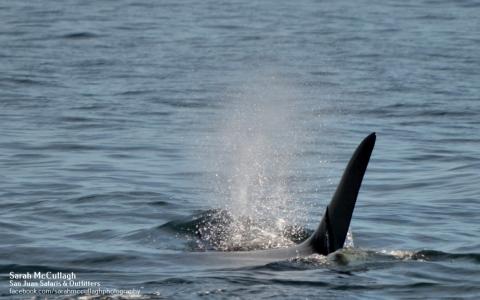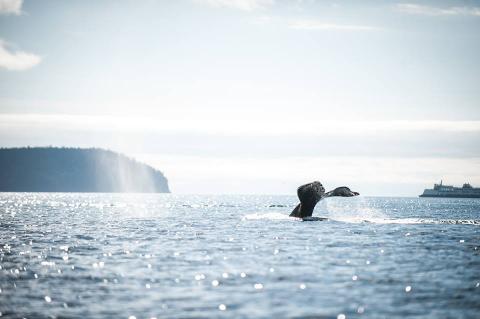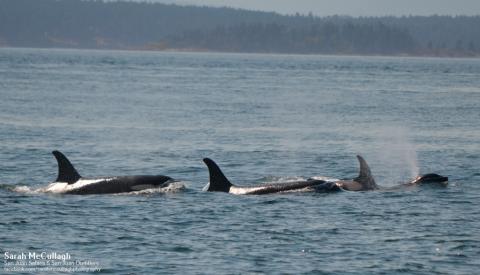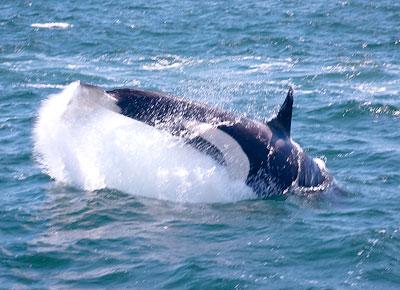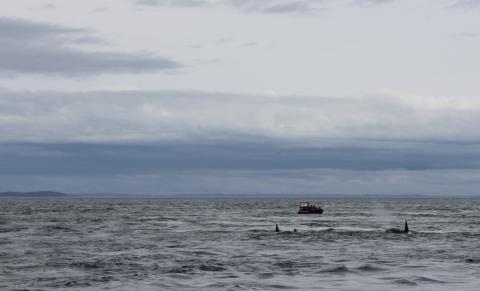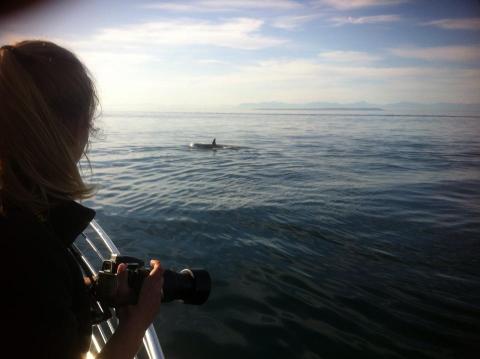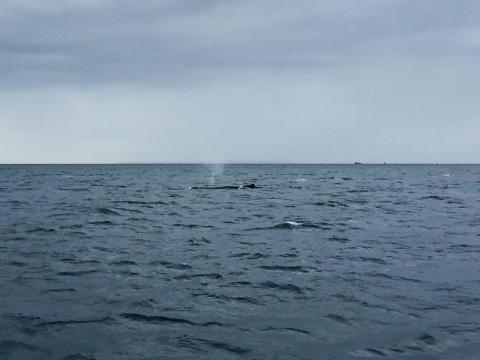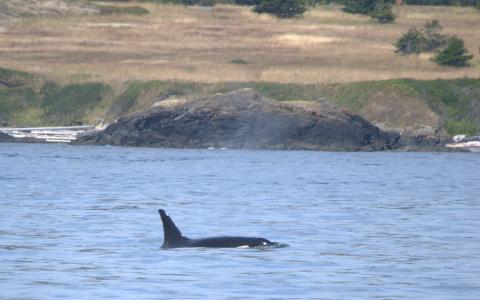
Orcas and Humpback Whales in the Waters around San Juan Island
Yesterday we enjoyed yet another stunning July day on the water around San Juan Island. Naturalist Erick, Captain Mike and I were excited to be able to share some of our famous, critically endangered Southern Resident Killer Whales (SRKWs) with our guests on the 1:30 departure from Friday Harbor. The water was glassy and as we cruised the air was just the right level of chilly over the water. It was a perfect day to watch some whales.
We were lucky enough to encounter some of L-pod...
